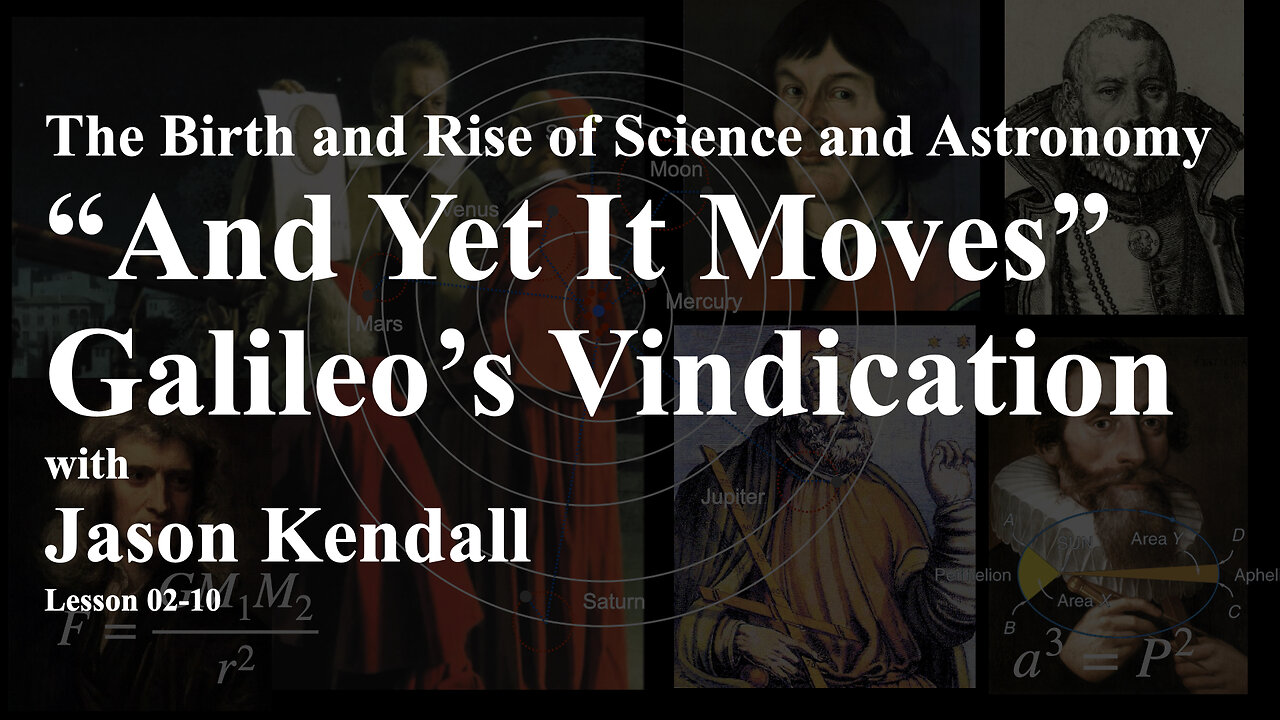Premium Only Content

Why Does the Earth Move? Discover the Science Behind the Motion!
The historical discourse surrounding the structure of our cosmos has evolved significantly, transitioning from Aristotelian geocentrism to contemporary heliocentric models. This evolution has been underscored by advancements in observational techniques and theoretical frameworks that have enabled scientists to provide compelling evidence for the Earth’s motion and its implications within the universe. Central to this discussion is the concept of parallax, an observable phenomenon that became a pivotal measurement in affirming the heliocentric model proposed by Copernicus and later substantiated by astronomers such as Friedrich Wilhelm Bessel.
The debate regarding the positioning of celestial bodies, particularly whether the Earth or the Sun occupies the center of the cosmos, persisted for centuries. The inherent challenge lay in the detection of stellar parallax, which would serve as definitive evidence of the Earth’s movement around the Sun. The notion of parallax posits that a star’s position appears to shift against a backdrop of distant stars as the observer’s viewpoint changes, a phenomenon that remains contingent upon the motion of the Earth. Despite the foundational principles established by Newton’s laws of motion and gravitation, parallax remained elusive until the 19th century, a gap that signifies the limitations of observational capabilities in earlier epochs.
In the late 17th century, Robert Hooke initiated early attempts to measure stellar parallax, focusing on Gamma Draconis, a star within the Draco constellation. However, his endeavors yielded inconclusive results, highlighting the technical constraints of his observational apparatus. Subsequent efforts by James Bradley in 1725 utilized a specialized telescope, which was ingeniously housed within a chimney, to continue the quest for parallax. Bradley’s investigations, while initially aimed at measuring stellar parallax, led to the unexpected discovery of stellar aberration. This phenomenon, resulting from the Earth’s motion through space, necessitated a recalibration of telescope alignment to account for the relative motion of the observer and the celestial object being observed. Bradley’s findings elucidated that the apparent position of Gamma Draconis and another star, 35 Camilla Parker, shifted due to the Earth’s orbital velocity, thus providing evidence of the Earth’s motion rather than that of the stars.
To conceptualize stellar aberration, one may liken it to the experience of running in the rain while holding a bucket. As one moves forward, the rain appears to strike the bucket at an angle; thus, the bucket must be tilted to ensure the rain falls solely within. This analogy serves to illustrate how the motion of the Earth affects the perceived position of stars, necessitating adjustments in the telescope’s orientation to maintain accurate observations.
The implications of stellar aberration extend beyond mere observational challenges; they represent a significant breakthrough in understanding the dynamics of celestial mechanics. The discovery of this effect provided robust evidence supporting the heliocentric model, reinforcing the notion that the Earth is not a fixed entity but rather a dynamic participant in the solar system’s intricate dance.
Furthermore, the investigation into the Earth’s rotation precipitated the exploration of the Coriolis effect, first mathematically articulated by Guglielmo in 1791. The Coriolis effect describes the deflection of moving objects within a rotating frame of reference, such as the Earth. Experimental validation of this phenomenon involved dropping objects from significant heights, where the expected deflection could be measured. Guglielmo’s experiments, conducted in the University of Bologna, demonstrated a consistent eastward deflection of approximately four millimeters over a drop of 29 meters, thereby providing empirical support for the Earth’s rotation.
In addition to these pioneering experiments, the Foucault pendulum emerged as a compelling demonstration of the Earth’s rotation. This device, when set in motion, maintains its plane of oscillation while the Earth rotates beneath it, visually confirming the rotation of our planet over time. Furthermore, during World War II, the necessity to account for the Coriolis effect became paramount in artillery calculations, underscoring the practical implications of these scientific discoveries in real-world applications.
While parallax measurements remained unattainable for centuries, the eventual successful measurement of the parallax of 61 Cygni by Bessel in 1838 represented a landmark achievement in astrophysics. By measuring the apparent shift of this binary star against distant background stars, Bessel provided the first quantifiable evidence for the distance to a star based on parallax, effectively overcoming the limitations of previous astronomers. Bessel’s measurement of 0.285 arcseconds established the groundwork for subsequent astronomical distance measurements, fundamentally altering our understanding of the scale of the universe.
The challenges associated with measuring parallax and the Coriolis effect highlight the technological advancements that underpin modern astronomical inquiry. As Aristotle and his contemporaries grappled with these concepts, they lacked the necessary tools to validate their hypotheses. It is imperative to recognize that the limitations faced by early astronomers do not diminish their contributions; rather, they underscore the gradual evolution of scientific understanding, which is predicated on the cumulative efforts of successive generations.
The scientific method, characterized by rigorous hypothesis testing and reproducibility, serves as the cornerstone of contemporary scientific inquiry. The process of making measurements, articulating predictions, and inviting scrutiny fosters an environment wherein knowledge can be continuously refined and expanded. Each measurement serves not only to validate existing theories but also to challenge and provoke further investigation, thereby embodying the essence of scientific progress.
As we navigate the complexities of modern astronomy, the foundational concepts established by early astronomers remain ever relevant. The ongoing exploration of cosmic phenomena, such as the lifecycle of stars, the nature of black holes, and the expansion of the universe, necessitates precise measurements and innovative methodologies. The narrative of scientific progress, from Aristotle to the present, illustrates a profound journey characterized by inquiry, discovery, and the relentless pursuit of knowledge that defines our understanding of the cosmos. This journey continues to inspire future generations, as we strive to unravel the mysteries of the universe and expand the horizons of human understanding.
-
 1:57:22
1:57:22
The Charlie Kirk Show
3 hours agoTucker Carlson on the Faith of Charlie Kirk | 9.19.2025
113K97 -
 LIVE
LIVE
Dr Disrespect
3 hours ago🔴LIVE - DR DISRESPECT - SUPER ENTERTAINMENT POWER
1,386 watching -
 LIVE
LIVE
Lara Logan
7 hours agoTHE FIGHT FOR A FREE BRITAIN with Katie Hopkins | Episode 36 | Going Rogue with Lara Logan
674 watching -
 LIVE
LIVE
Jeff Ahern
46 minutes agoFriday Freak out with Jeff Ahern
116 watching -
 16:52
16:52
IsaacButterfield
10 hours ago $0.22 earnedWoke Karens Are Trying to End This Man’s Career
3.7K3 -
 4:09:14
4:09:14
The Bubba Army
1 day agoRaja Jackson Arrested! - Bubba the Love Sponge® Show | 9/19/25
13K1 -
 2:04:42
2:04:42
The Culture War with Tim Pool
4 hours agoDemonic Possession, Exorcisms, And The Soul Of America | The Culture War with Tim Pool
161K135 -
 20:00
20:00
Neil McCoy-Ward
2 hours ago🔥 It's Absolute CHAOS In Europe 🇪🇺 Today...
18.2K5 -
 1:07:41
1:07:41
Steven Crowder
4 hours agoSPECIAL: A Behind-the-Scenes Peek at Some of Our Biggest Productions
218K106 -
 59:40
59:40
The Rubin Report
4 hours agoListen to ‘The View’ Crowd Gasp as Whoopi Admits She Agrees w/ Conservatives on This
67.1K41